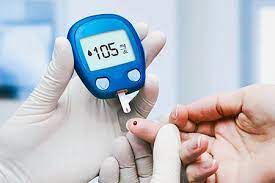Exeter, UK — August 17, 2024 — Recent research has unveiled new insights into the gender disparity in Type 1 Diabetes (T1D) risk, identifying a critical age-related divergence between males and females. According to a study involving over 200,000 first-degree relatives of T1D patients, the risk associated with male sex becomes notably pronounced around the age of 10.
The TrialNet program’s data reveal a significant interaction between age and sex in T1D risk. “There’s a clear interaction with age and male sex being a risk factor. At the age of ten in girls, there seems to be this tipping point where the risk of type 1 diabetes dramatically reduces,” said Dr. Richard Oram, lead investigator from the Institute of Biomedical and Clinical Science at the University of Exeter Medical School.
The research observed a steep decline in the five-year risk of developing T1D in women who were screened and tested positive for T1D-related autoantibodies before age 10, compared to those tested after this age. Conversely, men exhibited a steady risk progression regardless of their age at screening. Dr. Oram suggested that this pattern might be linked to puberty-related changes, as the age of 10 coincides with the onset of puberty.
First author Erin L. Templeman, a PhD student at Exeter, emphasized that while T1D prevalence between boys and girls is similar in childhood, the disparity becomes evident later. “We aimed to explore this further,” Templeman told Medscape Medical News, referencing earlier studies that had also noted gender differences but primarily focused on older age groups.
Screening practices currently target individuals with first-degree relatives who have T1D, with emerging guidelines for managing those who test positive. Dr. Oram highlighted that boys are more likely to screen positive for T1D after age 10. “If you conduct a screening study at age 10 or later, you would expect to find more boys testing positive than girls,” he noted.
Dr. William Hagopian, MD, PhD, from the University of Washington, commented on the findings, pointing out the intriguing association between lower risk in females and the age of menarche. “This connection is speculative and requires further investigation,” Hagopian said, emphasizing the need to understand the mechanisms behind gender differences in early-stage disease progression.
The study also found that males were more likely to test positive for multiple autoantibodies and to progress to T1D within five years if only one autoantibody was present. Among those with multiple autoantibodies, the progression risk was similar across genders. “Once you hit stage I or stage II, male sex is no longer a risk factor for progression,” Dr. Oram explained.
The findings will be presented on September 10, 2024, at the annual meeting of the European Association for the Study of Diabetes. The research was funded by the National Institutes of Health (NIH) and the Juvenile Diabetes Research Foundation (JDRF). Dr. Oram and Templeman received additional support from Randox, while Dr. Hagopian’s work was supported by various organizations, including Janssen R+D and Provention Bio.
This study highlights the importance of considering sex as a variable in T1D research and underscores the need for targeted follow-up strategies for individuals with single autoantibody positivity.












